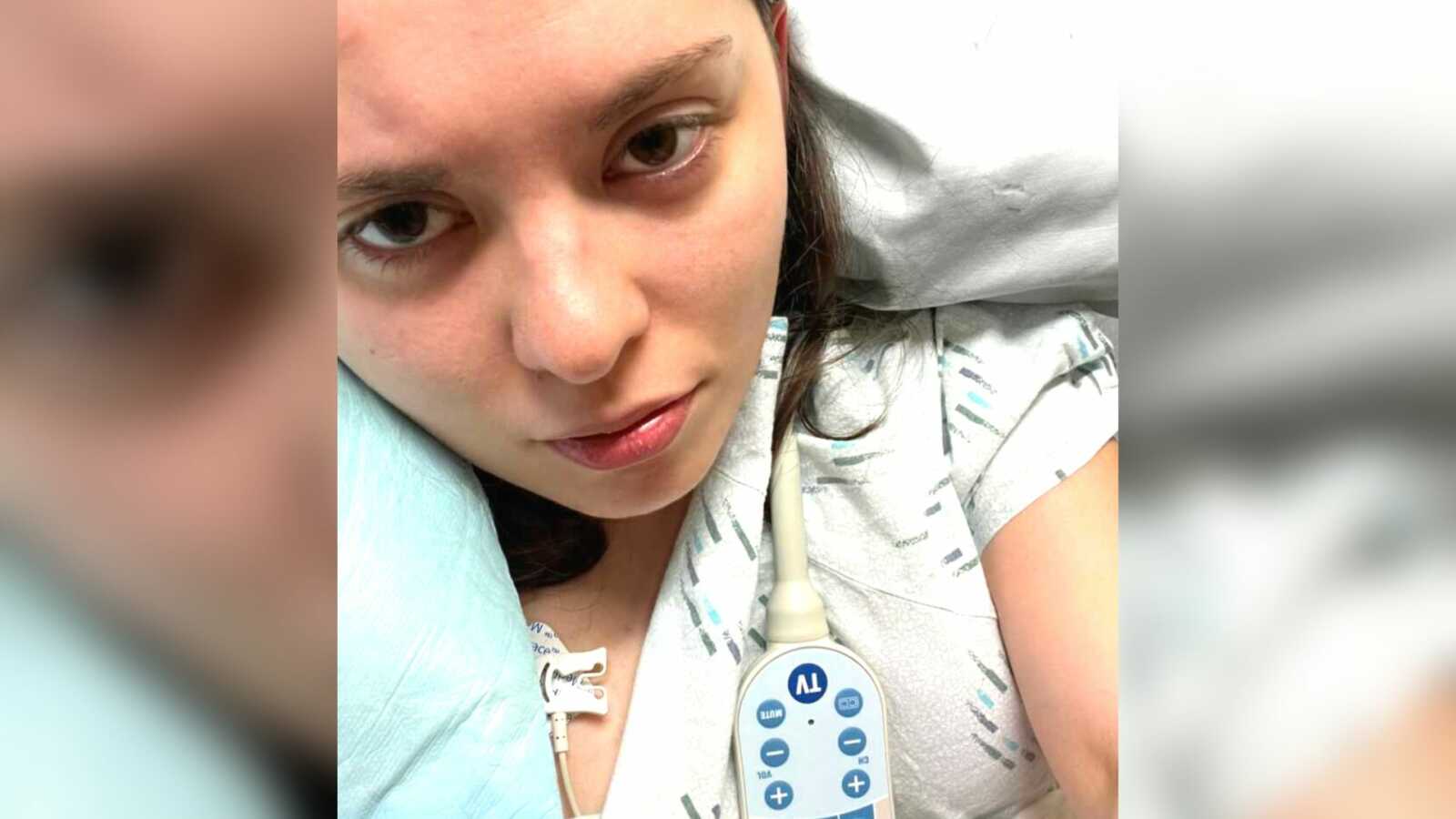Early Signs of Postural Orthostatic Tachycardia Syndrome
“I wouldn’t say that I’ve had the easiest life in my 25 years on this planet, but there were things I took for granted and assumed I’d always be able to rely on. My health was one of them. From a young age, I was a fighter. My childhood was rough and I always felt I needed to prove how tough I was, that nothing could break me and that I could always stand back up when I fell. I would go until I couldn’t go anymore, and then push myself some more because that’s where I found my worth at the time: in how much I could do for everyone else.
I was going a hundred MPH every day of my life until one day I suddenly wasn’t anymore. That day was March 25, 2022. I had spent the morning at a Starbucks working on my laptop, and then came home for lunch. Most days I felt fatigued for some reason (something I always brushed off and powered through) but that morning I had a little more energy, which was nice! I arrived home and gave my husband a call to discuss what we would have for lunch. That was the moment my life changed. As I stood there my body suddenly gave out on me. I dropped the takeout menu I’d been holding in my hand and fell into a chair. It felt like I was spinning and losing consciousness, and my body was so weak I couldn’t move.
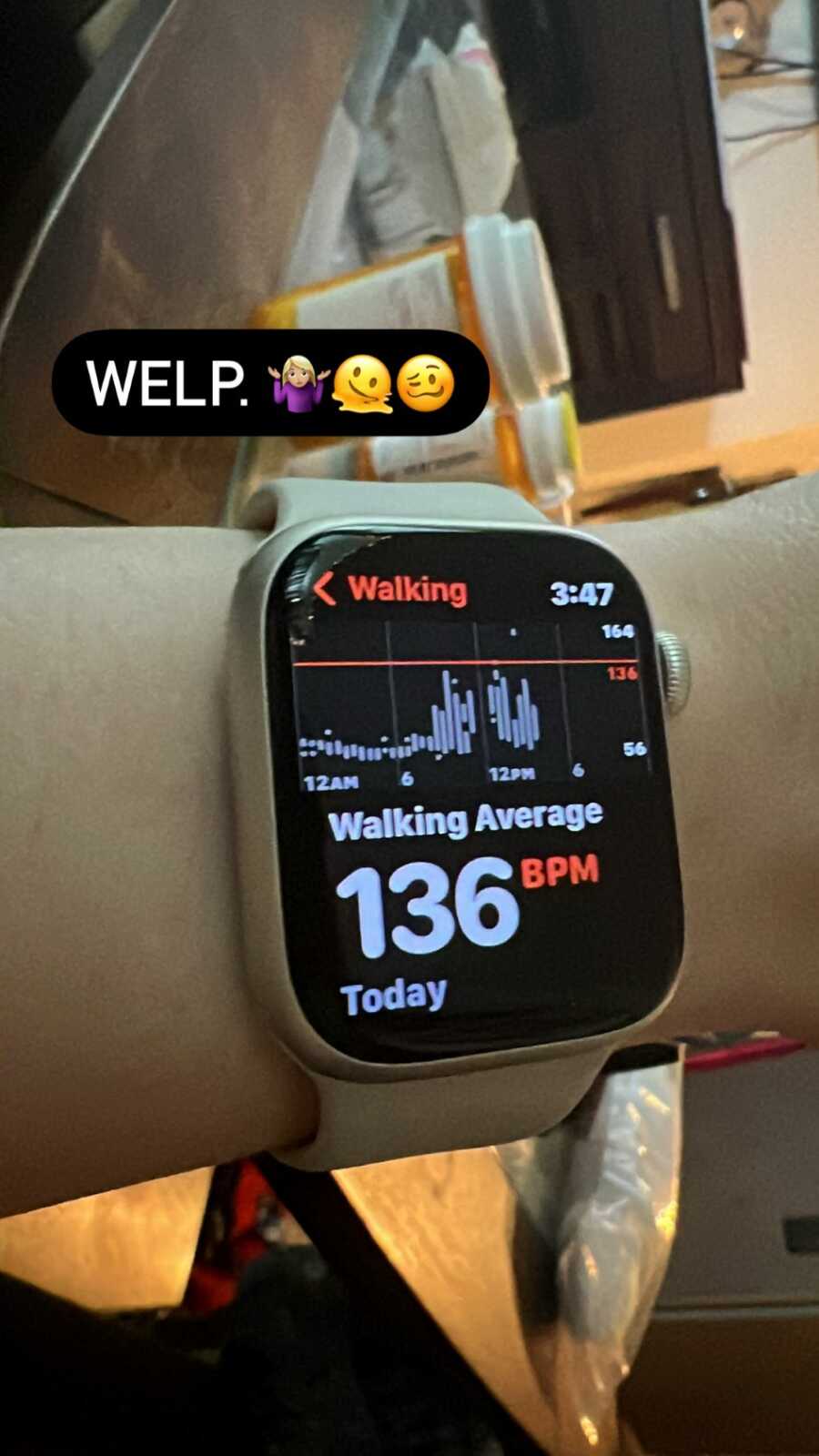
My husband rushed home and took me to an urgent clinic across the street. He had to drag me in because I couldn’t stand. The minute they saw me they called an ambulance and rushed me to the local hospital. After running only a basic blood panel the doctor told me I was having a panic attack and prescribed medication to calm me down since my pulse was so high. Not knowing any better, I agreed, took the medication, and went home. Over the next two days, my symptoms got so much worse. I couldn’t sit up without my entire body giving out on me, I wasn’t able to eat because my heart would start racing so badly, and even though I was taking the medication, nothing changed. My husband brought me back to that ER where they (after protesting) agreed to transfer me to a larger hospital 45 minutes away. Visiting hours ended, and my husband was told he couldn’t come with me to the other hospital, so at 3:00 a.m. I was taken alone in an ambulance, still fighting waves of unconsciousness and terrified that at any minute my heart would give out.
Over the next 9 days, I lay in the same hospital bed as they ran basic tests like CTs, x-rays, and blood panels trying to determine what was wrong. Immediately after arriving, they started me on a constant IV drip of Ativan (better known as Xanax, one of the strongest anti-anxiety medications). My husband fought and won the fight to stay with me in my hospital room, and he slept in a stiff chair every night while helping feed and change me since I couldn’t move out of the bed at all. It was humiliating for me to be so helpless at such a young age, but it also gave me the chance to see how deeply he loved me, in sickness and in health. I wasn’t aware enough to appreciate it then, but looking back now makes me so grateful for him all over again.

Journey To Postural Orthostatic Tachycardia Syndrome Diagnosis
Their tests were completed and the doctor came in and told me that the diagnosis was anxiety. He said that my heart looked fine. His exact quote was, ‘I have plenty of patients who would want to be you,’ and because of that there was no reason I couldn’t get up and walk. They brought in a Physical Therapist and made me get up and walk even though I felt no better and the room was spinning and going dark. My heart rate was shooting up to 180bpm and they said it was just a panic attack, even though I had been medicated as much as possible! My husband fought the doctor, trying to reason with him that there was something wrong other than anxiety, and I remember crying to one of the nurses, begging them to have the doctor transfer me somewhere else. But the doctor refused, and instead, he discharged me and had me wheeled out of the hospital telling me to just ‘try some yoga.’ He also instructed me to not even think about using a wheelchair since I would become ‘dependent’ on it.
Within 24 hours after leaving the hospital, my symptoms quickly escalated even worse. I developed an infection and my stomach was in so much pain I couldn’t breathe. My pulse wouldn’t stop racing and my body was getting weaker by the minute. At midnight the following day my husband called 911 and instructed the paramedic to take me anywhere but the ER I had originally gone to. A different hospital chain was further down the road and they took me there. This hospital admitted me right away, telling me that there was no way they could let me go if I wasn’t able to walk on my own. I stayed in that hospital for another 9 days, where they ran the same tests and worked to find the source of these symptoms.
After the tests were complete, the doctor came in and asked if I had ever heard of POTS. Long story short, that was the answer.
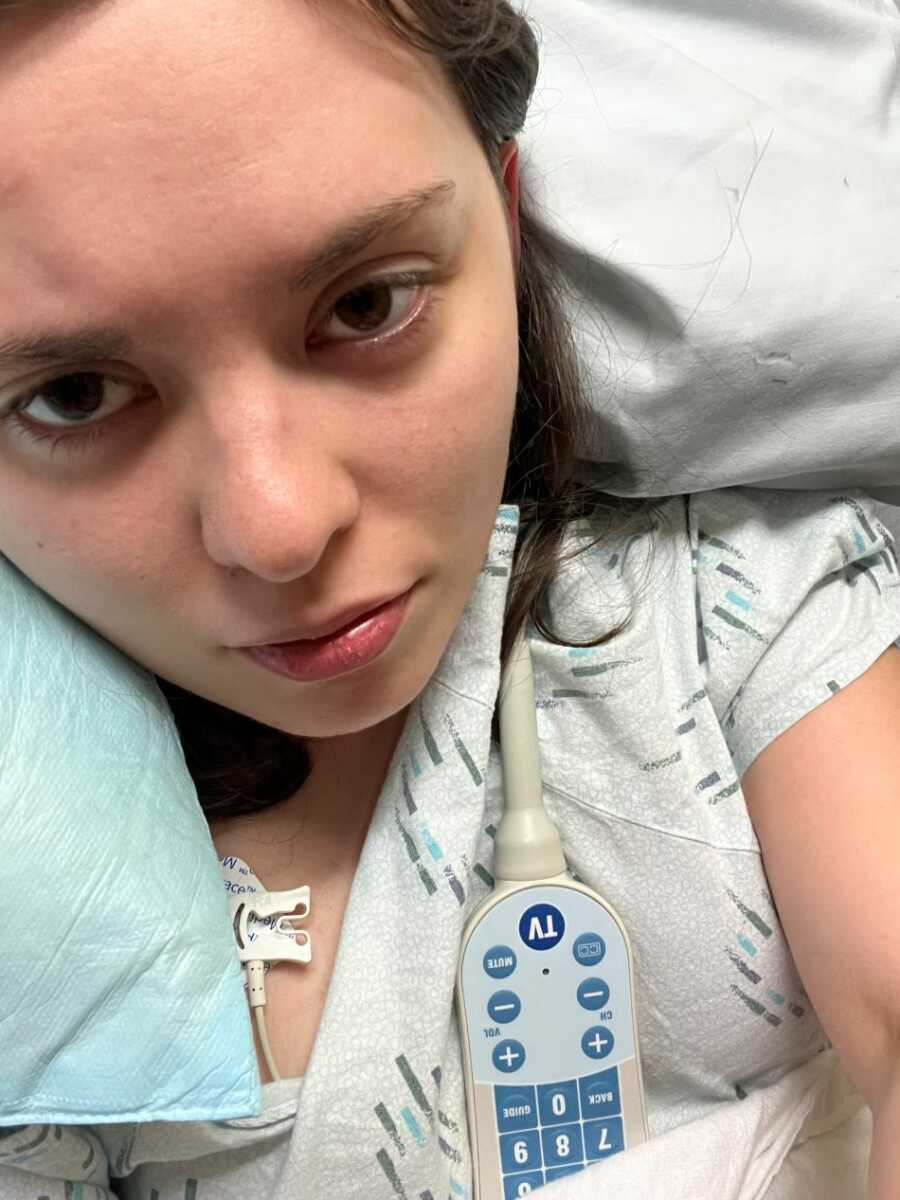
What Is Postural Orthostatic Tachycardia Syndrome?
POTS (Postural Orthostatic Tachycardia Syndrome) is an autonomic nervous system disorder that causes the heart to race whenever your body is in a vertical position. It is an intolerance to gravity because the nervous system does not properly communicate with the heart about how to handle standing. The blood pools in the lower extremities and pulls it away from your heart and brain, which causes you to pass out. In addition to this, it causes many other symptoms even when you aren’t standing such as digestive complications, lightheadedness, vision issues, migraines, temperature dysregulation – and many more!
We went down the list of symptoms and I know that I cried when I realized I wasn’t going crazy and that someone wasn’t telling me it was just anxiety.
Raising Awareness About Postural Orthostatic Tachycardia Syndrome
That was just the beginning of the journey because POTS does not have a cure. The only specialist who could help me was an Electrophysiologist, and there wasn’t one available until almost July. It was the beginning of April. I still couldn’t stand and I ended up going home and setting myself up on the couch…for two and a half months. My husband ended up starting an online fundraiser to buy me a basic wheelchair to help me get around, and over those months I only left the apartment twice. both times for additional ER visits when complications arose.
It was during the time I was quarantined that I began doing as much research as I could to learn about POTS and I discovered how little information there was. Out of boredom I opened up an Instagram page and shared my health updates on there for friends and family, but I began sharing some information about POTS to help show them what I was going through. Creating and sharing posts was something I enjoyed, so I decided to make it into a little hobby and kept creating content.
Two months after I opened the account, one of my reels went viral, and overnight I had hundreds of followers pouring in. I started getting messages from people who had experienced similar symptoms and had never even heard of POTS. Some people were trying to get diagnosed and facing the same gaslighting I’d experienced. They were sharing their advice and asking for mine, and suddenly this massive community grew in what seemed like an instant. And suddenly I found a purpose amidst the pain of this chronic illness.
Learning To Live With Chronic Illness
In June, I was formally diagnosed and put on a medication that now helps me regulate my pulse. It isn’t a cure, but it does help me to live a little more than before. These days I still work from home and I use my wheelchair exclusively. I haven’t walked on my own since the day I first went to the ER, but through this, I also advocate for disability rights and chronic illness awareness. I am now working with a wonderful rheumatologist to determine what is causing the POTS. We are pretty certain that contracting COVID in August 2021 played a role in it, but as of right now we still don’t have all the answers.
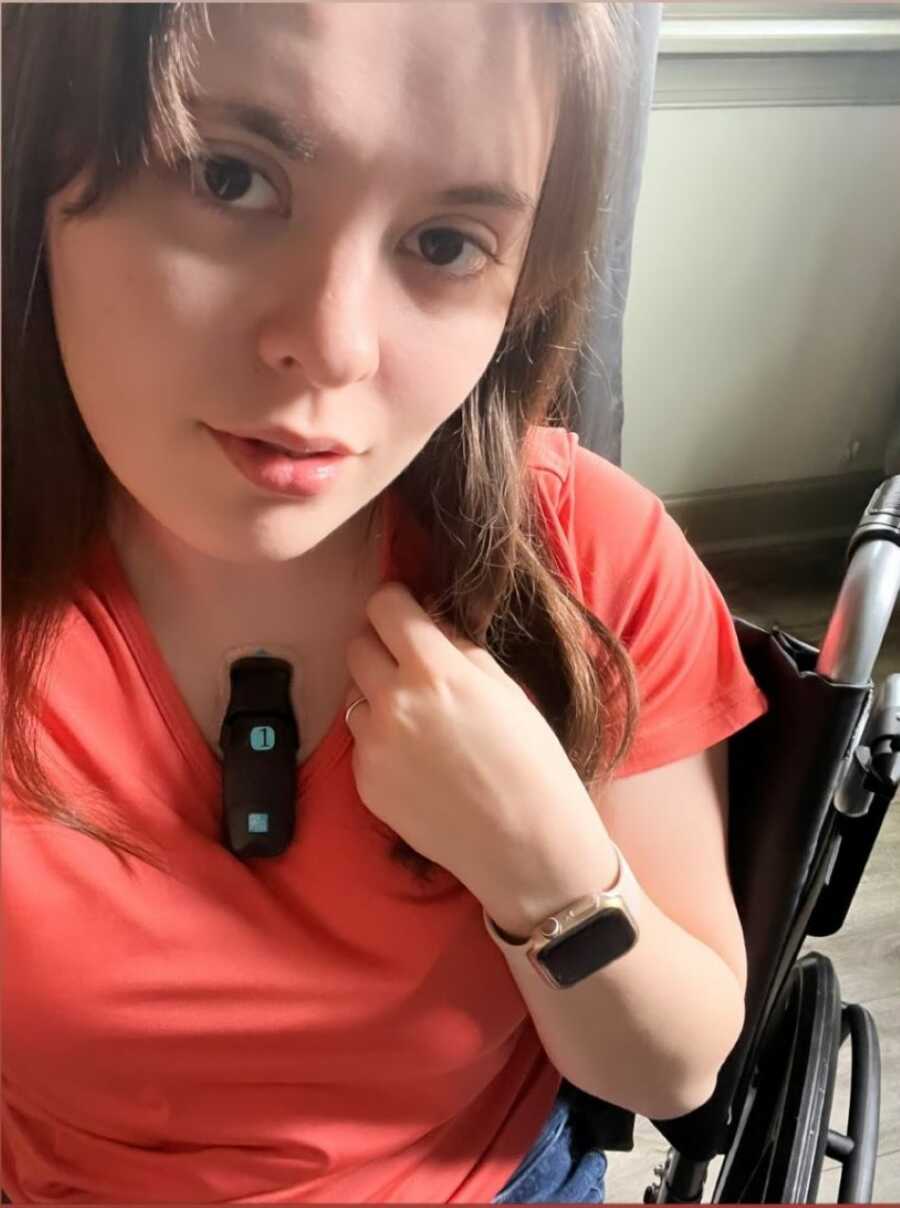
That is the reality of a chronic illness; it is not something you get over. You are constantly dealing with new symptoms, new medications, new doctors, and new diagnoses. It is a condition that has affected every area of my life, changed all of our life plans, and changed who I am. But not all of those changes are bad. Since getting sick I have been forced to slow down, and in that my eyes have been opened to the small joys of life that I would have overlooked in the past. My relationships and friendships have deepened, and most prominently my relationship with religion has grown through all of this. In the moments when no one could help me, God was there. My incredible husband was there. My wonderful father-in-law was there. My closest friends were there and I’ve gotten more love and support from them than I ever could have imagined.
Staying Positive
As of today, I have 17,000 followers on an account that has given me more purpose than almost anything else I’ve ever done in my life. I continue to research and share my experiences and help share the truth about chronic illness, disability, and medical gaslighting. As I continue on this journey, I invite my online community to follow along and I have chosen to be as authentic as possible about the struggles and joys in my everyday life.
If I could say anything to encourage someone who is going through a similar battle, it would be that you haven’t experienced your last joyful moment. For those first weeks, I was devastated and when I realized my illness was incurable, I was crushed. In those moments you truly believe your life is over and you will never feel the joy you did before you got sick. And while that is partly true because your life will never be the same as it was before, your illness is not powerful enough to remove joy from your life forever. If possible you will feel joy even more deeply and richly than you possibly could have before. Through the pain and struggle you will make memories and laugh and cry and grow closer to those who stayed by your side through it all. You will notice the little things and find a deep, lasting joy in living life itself. You will be forced to slow down, and it will be so hard but at the same time so beautiful. You’ll have moments where you feel like your life is over but believe me, it isn’t.
My journey is far from over, but I’m counting my blessings and continuing to fight this illness each day, putting my life in God’s hands and enjoying the moments I’ve been given.”
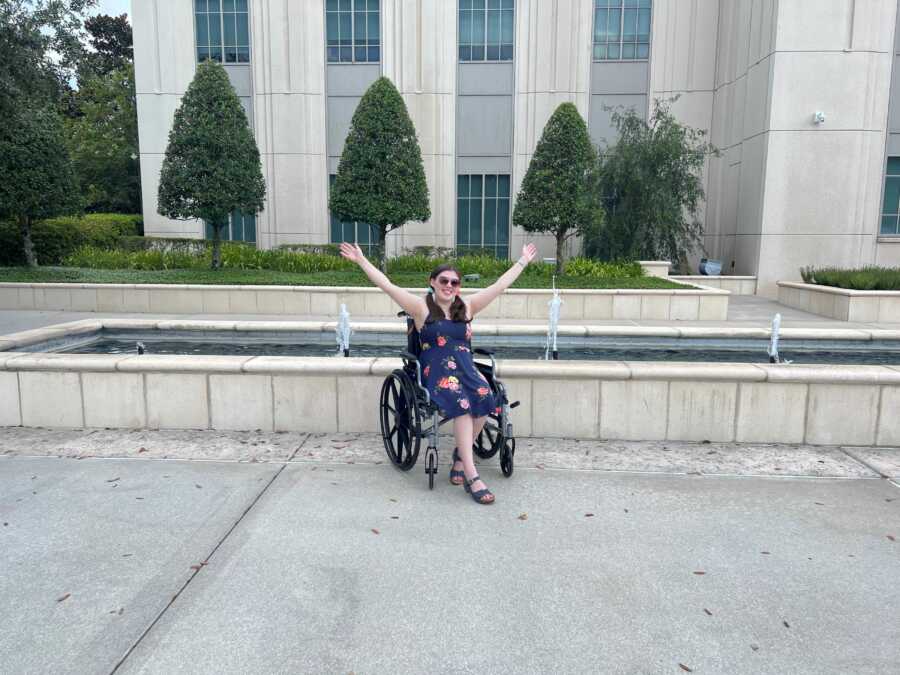
This story was submitted to Love What Matters by Reagan M. You can follow her journey on Instagram. Submit your own story here, and be sure to subscribe to our free email newsletter for our best stories, and YouTube for our best videos.
Read more inspiring stories here:
5 Things To NEVER Say To Someone With Chronic Illness
5 Key Tips To Help You Thrive With A Chronic Illness
Do you know someone who could benefit from this story? SHARE this story on Facebook to let others know a community of support is available.

